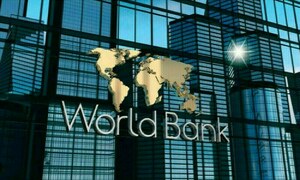Pakistan’s Poverty Rate Projected to Remain High
The World Bank projects that Pakistan’s poverty rate will reach 42.4% in fiscal year 2025. With a population growth rate of almost 2% per year, this suggests that an additional 1.9 million people will experience poverty this year.
In its latest “Poverty & Equity Brief,” the World Bank highlighted that despite a stabilizing economy and decreasing inflation, Pakistan’s economic expansion of 2.6% is not sufficient to significantly alleviate poverty.
The report indicates that the poverty rate is predicted to be 42.4% (US$3.65/day 2017 PPP) in fiscal year 2025, essentially the same as the previous year. This persistent rate, coupled with population growth, means more people will struggle with poverty.
Economic Model Needs Urgent Reform
The World Bank suggests Pakistan’s economic model requires a major overhaul.
Consumption-based inequality, as shown by the Gini Index, has risen by almost 2 points since fiscal year 2021, remaining steady just below 32 in the past year. The report notes that actual inequality may be even greater since surveys often undercount wealthier households.
Furthermore, external factors like changes in global trade could affect the economic recovery and subsequent poverty reduction. After growth in fiscal year 2024, the agricultural sector is now facing considerable challenges.
In the first half of fiscal year 2025, weather conditions worsened with a 40% decrease in rainfall, alongside pest infestations and changes in production decisions. Crop production is expected to fall, from 29.6% for cotton to 1.2% for rice, limiting sectoral growth to less than 2%.
With agriculture employing about half of the working poor, poverty in rural areas is anticipated to increase slightly (0.2 percentage points), while real incomes for agricultural workers are forecast to decline by 0.7% in fiscal year 2025.
Food security is a major concern, with approximately 10 million people at risk of severe food shortages in rural areas. Fiscal constraints have reduced development spending, negatively impacting the construction sector, which employs 17% of the poor in daily wage positions.
Both the industrial and service sectors showed slow growth in the first half of fiscal year 2025, leading to only slight increases in real income for poor and vulnerable workers in construction (-1.4%) and low-productivity service jobs (0.7%).
While nominal daily wages for low-skilled workers nearly doubled between fiscal year 2019 and the first quarter of fiscal year 2025, real wages have remained stagnant or slightly decreased, indicating a loss of purchasing power, despite inflation decreasing to 7% year-over-year in the first half of fiscal year 2025.
External remittances increased substantially by 33% in the first half of fiscal year 2025, but the impact on the poorest households is limited since only 3.2% of the lowest-income households receive remittances. However, remittances are important for vulnerable households just above the poverty line in preventing them from falling into poverty when facing economic challenges.
Increased emigration since 2020, especially among low-skilled workers, might help broaden the benefits of remittances to poorer households. Recent increases in benefits under the Benazir Income Support Program that are above inflation rates, along with a planned expansion to include 500,000 additional households by the end of the fiscal year, should support household consumption and help protect the poor from short-term market fluctuations.



Comments (0)
No comments yet. Be the first to comment!
Leave a Comment